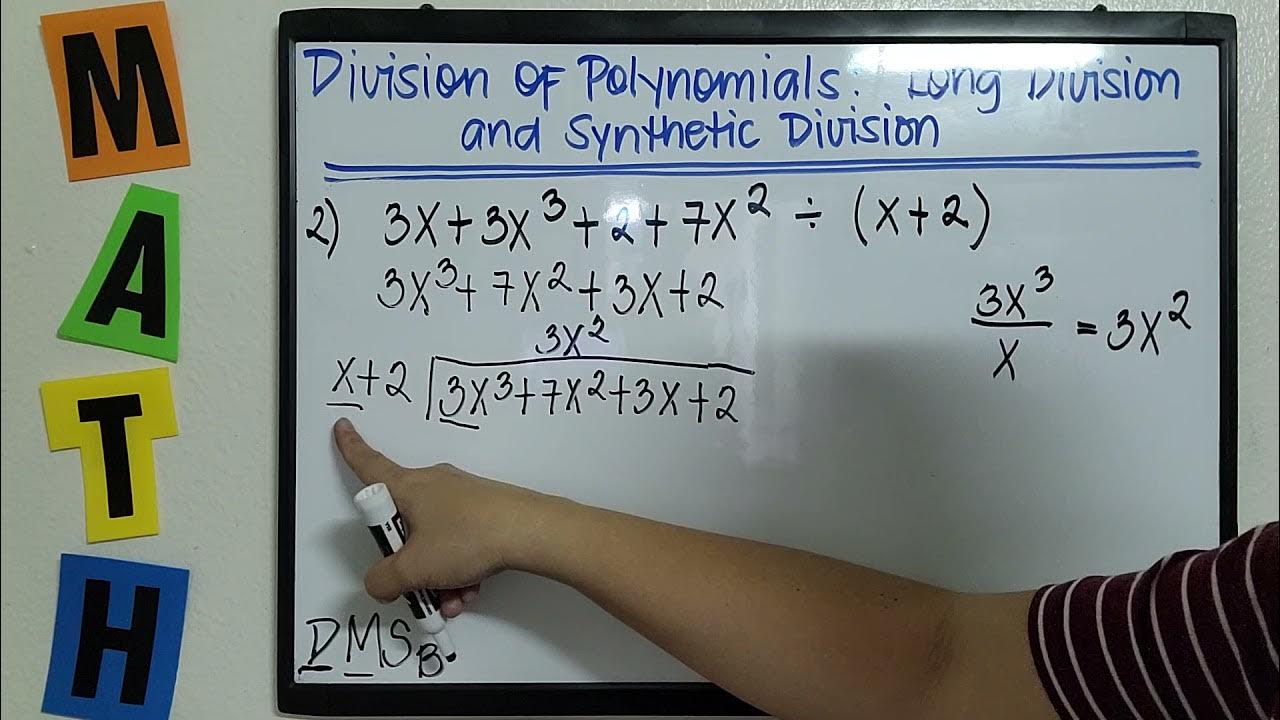Math 8 | Quarter 1- Week 2 | Solving Problems Involving Factors of Polynomials | Acute Angels TV
Summary
TLDRIn this educational video, Teacher Eliza teaches students how to solve problems involving factors of polynomials. She walks through three word problems, demonstrating step-by-step solutions, including finding two consecutive integers with a product of 272, determining the dimensions of a rectangle with an area of 65 square feet, and identifying a number that satisfies a given polynomial equation. The lesson emphasizes the importance of defining variables, setting up equations, and factoring to find solutions, aiming to equip students with the skills to tackle similar problems.
Takeaways
- 📚 The lesson is focused on solving problems involving factors of polynomials.
- 🔍 The first word problem involves finding two consecutive integers whose product is 272.
- 📝 The teacher introduces a method to define and set up an equation for the problem, leading to the equation n^2 + n = 272.
- 🧩 The equation is factored into (n + 17)(n - 16) = 0, yielding two possible integer solutions.
- 🔑 The solutions to the first problem are the pairs of integers (-16, -17) and (16, 17).
- 🏠 The second problem deals with finding the dimensions of a rectangle given its area and the relationship between length and width.
- 📐 The dimensions are found using the equation 3x^2 - 2x = 65, which is then factored to find the width.
- 📏 The width of the rectangle is determined to be 5, and the length is 13, confirming the area is indeed 65 square feet.
- 🔢 The third problem asks to find a number where three times the number minus 2 equals negative 9 times the square of the number.
- 🤔 The equation is set to 9x^2 + 3x - 2 = 0 and factored to find the possible values of the number.
- 🎯 The final values for the number are x = -2/3 and x = 1/3, which are verified to satisfy the original equation.
- 👩🏫 The lesson is taught by Teacher Eliza Mae Kunan, a grade 8 mathematics teacher, emphasizing the importance of understanding factors in polynomials.
Q & A
What is the main topic of the learning episode presented by Teacher Eliza?
-The main topic of the learning episode is solving problems involving factors of polynomials.
What is the first word problem presented by Teacher Eliza, and what is the mathematical equation derived from it?
-The first word problem is about finding two consecutive integers whose product is 272. The derived equation is n^2 + n = 272.
How does Teacher Eliza suggest setting up the equation for the first word problem?
-Teacher Eliza suggests setting up the equation by defining the first integer as n and the second consecutive integer as n + 1, and then multiplying these two integers to get the equation n(n + 1) = 272, which simplifies to n^2 + n = 272.
What is the next step after setting up the equation for the first word problem?
-The next step is to set the equation equal to zero by subtracting 272 from both sides, resulting in n^2 + n - 272 = 0.
How does Teacher Eliza approach factoring the quadratic equation from the first word problem?
-Teacher Eliza approaches factoring by looking for two numbers that multiply to -272 and add up to 1 (the coefficient of the middle term). The correct pair of factors is -16 and 17.
What are the possible values of the first integer 'n' in the first word problem?
-The possible values of 'n' are -17 and 16, as derived from setting each factor equal to zero: n + 17 = 0 or n - 16 = 0.
What is the second word problem presented by Teacher Eliza, and what is the formula used to solve it?
-The second word problem is about finding the dimensions of a rectangle with a given area of 65 square feet. The formula used is the area of a rectangle, which is length times width, leading to the equation 3x^2 - 2x = 65.
How does the equation for the second word problem get transformed to set it equal to zero?
-The equation is transformed by subtracting 65 from both sides, resulting in 3x^2 - 2x - 65 = 0.
What is the method used by Teacher Eliza to factor the trinomial equation from the second word problem?
-Teacher Eliza uses trial and error with the factors of -65 to find the correct pair that, when multiplied with the respective terms, gives the middle term of the trinomial. The correct pair is -5 and 13.
What are the possible dimensions of the rectangle in the second word problem?
-The possible dimensions of the rectangle are width 5 feet and length 13 feet, as derived from solving x = 5 and substituting it into the length formula 3x - 2.
What is the third word problem presented by Teacher Eliza, and what is the final equation to solve it?
-The third word problem is about finding a number where the difference of three times the number and 2 is the same as negative 9 times the square of the number. The final equation to solve is 9x^2 + 3x - 2 = 0.
How does Teacher Eliza determine the correct factors for the trinomial equation in the third word problem?
-Teacher Eliza determines the correct factors by trying different pairs of factors of -2 and finding that the pair -1 and 2, when used, results in the middle term of the trinomial, which is 3x.
What are the possible values of the number 'x' in the third word problem?
-The possible values of 'x' are -2/3 and 1/3, as derived from solving 3x + 2 = 0 and 3x - 1 = 0.
How does Teacher Eliza verify the solutions for the third word problem?
-Teacher Eliza verifies the solutions by substituting the values of 'x' back into the original equation and checking if they satisfy the equation.
Outlines

This section is available to paid users only. Please upgrade to access this part.
Upgrade NowMindmap

This section is available to paid users only. Please upgrade to access this part.
Upgrade NowKeywords

This section is available to paid users only. Please upgrade to access this part.
Upgrade NowHighlights

This section is available to paid users only. Please upgrade to access this part.
Upgrade NowTranscripts

This section is available to paid users only. Please upgrade to access this part.
Upgrade NowBrowse More Related Video

Solving For Commission and Commission Rate | Grade 7 | Matatag Curriculum | Explain in Detailed |

TAGALOG: Division of Polynomials - Long Division and Synthetic Division #TeacherA

MATH 5 || QUARTER 1 WEEK 8 LESSON 1 | VISUALIZATION OF DIVISION OF FRACTION | MELC-BASED

PENDIDIKAN MATEMATIKA - MODUS DATA KELOMPOK

Stoichiometry with Mass: Stoichiometry Tutorial Part 2

Latihan PAT Polinom/Suku Banyak ke (2) Matematika Peminatan XI MIPA Rosidawati Sinurat M.Pd
5.0 / 5 (0 votes)